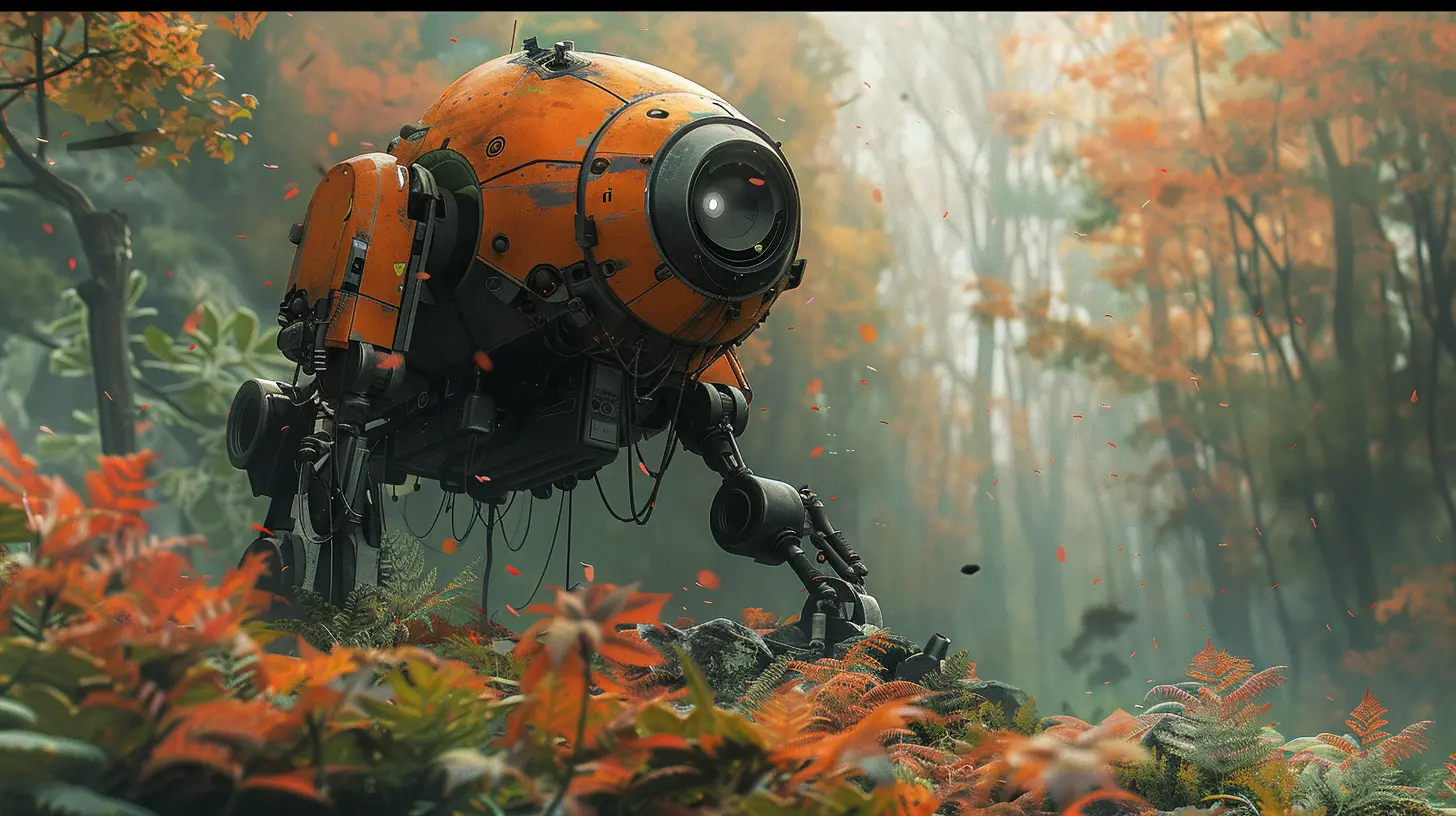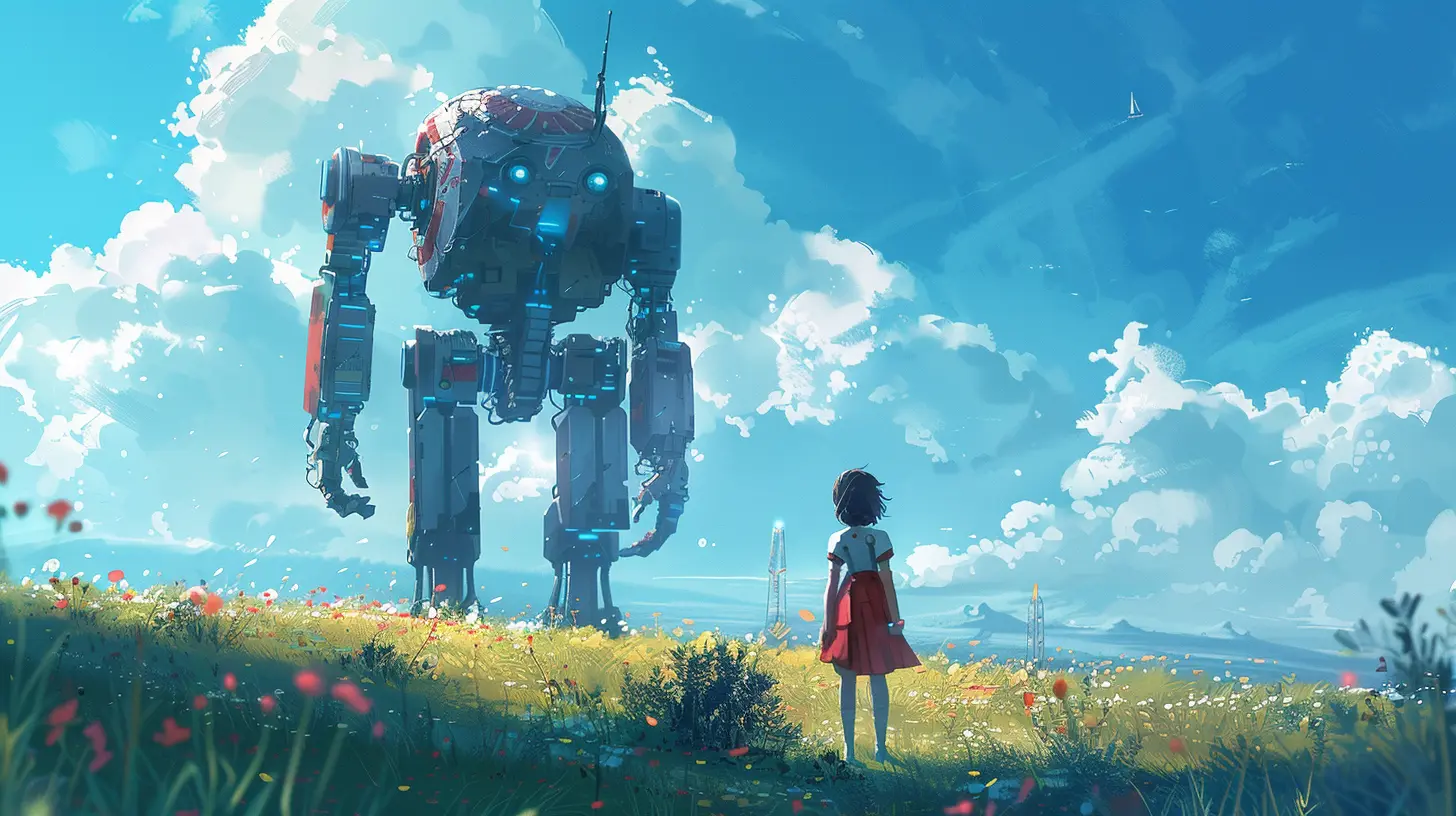Designing AI Companions: Balancing Helpfulness and Challenge
4 July 2025
Ever wished your in-game buddy had just a little more personality—or maybe a little less nagging? We’ve all had that one sidekick who felt more like a babysitter than a partner (looking at you, Navi!). Designing AI companions in video games is no walk in the park. Developers have to strike a fine balance between making them helpful without being annoying, and challenging without being a hindrance.
So, how do they do it? How do they create those lovable, believable digital companions that stick with you long after the game is over? Buckle up, because we’re diving into the quirks, challenges, and absolute craft of designing AI companions that lift you up without stealing the spotlight.
Why AI Companions Matter in Games
Let’s face it—nobody wants to feel alone in a sprawling open world. Whether it’s Ellie tagging along in The Last of Us or Atreus in God of War, AI companions liven up gameplay. They make the story feel richer, the stakes higher, and the combat more dynamic.But they’re not just there for emotional support. AI companions actually shape the way you play:
- They provide combat assistance: Imagine facing a horde of enemies without a trusty backup.
- They enhance storytelling: Through witty banter, deep conversations, or even silent companionship.
- They guide and teach: Many games use companions to gently nudge players toward the next objective.
The magic is in the balance. If they’re too helpful, they’re spoon-feeding you. Too challenging, and they risk becoming dead weight.
The Art of Being “Just Helpful Enough”
So let’s talk about being helpful without being overbearing. Sure, we want our AI buddy to heal us in battle or point out a hidden door we missed—but we don’t want them jumping in every time we fumble a puzzle for two seconds.Context Awareness: The Secret Sauce
One of the biggest tech hurdles in AI design is context awareness. A well-designed companion should "know" when to act and when to chill. Developers code this magic through dynamic triggers, timers, and behavior trees. The idea is to mimic human intuition.Let’s say you’re low on health. Your AI companion might:
- Offer a health pack if one’s nearby.
- Warn you to take cover.
- Change tactics to protect you better.
But they shouldn’t rush to save you every time. Otherwise, where’s the challenge?
Teaching Without Talking Down
Another thing AI companions are great at? Tutorials that don’t feel like tutorials.Many games sneak their tutorials into companion dialogue. Think of Elizabeth in Bioshock Infinite or Alyx in Half-Life 2. They teach you game mechanics while staying in character. That’s genius-level storytelling and functional design in one.
Keeping the Challenge Alive
Now here’s where things get spicy. A lot of devs worry that if the AI is too capable, it’ll take the fun away from players. After all, we're here to play the game, not to watch an NPC do it for us.The “Player First” Rule
This is kind of an unwritten law in game design. Whatever companions do, it should always come second to the player’s actions. They enhance, never replace.That’s why in most games, AI companions rarely deal the final blow in boss fights. You’ll notice that they help wear enemies down, throw off their rhythm—but the glory moment is for you. Always.
Controlled Incompetence
Sounds weird, right? But sometimes, developers make companions intentionally flawed. Maybe they miss a shot. Or fumble a line. Or get scared and hang back.Why? Because perfection is boring.
Imperfect AI companions feel more human. They let players shine, feel needed, and even form emotional attachments. It’s kind of like choosing to play co-op with a younger sibling instead of a pro gamer—you like the feeling of leading, but still appreciate the help.
Personality Makes or Breaks It
Helpful and challenging? Great. But what really seals the deal is personality.A companion could have the best pathfinding and combat skills on Earth, but if they’re bland or annoying, players check out.
Writing Dialogue That Feels Real
Great companions have distinct voices. They’re funny, flawed, scared, brave, or all of the above. The dialogue needs to flow naturally, not just sound like a quest marker with legs.Look at Clank from Ratchet & Clank. He’s clever, precise, and often drops little bits of wisdom. Compare that to HK-47 from Star Wars: Knights of the Old Republic, who’s a complete murder-bot with a dark sense of humor. Totally different vibes—but both unforgettable.
Building Chemistry
Let’s not overlook chemistry. The relationship between the player and their AI buddy should evolve over time. Whether it’s trust, frustration, or love, some of the most iconic moments in gaming are born from this digital bond.And developers do this through in-game choices, story arcs, and dynamic reactions. It feels personal, even if it’s scripted.
Don’t Forget the Little Things
Sometimes what makes an AI companion memorable isn’t their combat tricks or puzzle skills—it’s the small stuff.- They hum a tune while waiting.
- They react to weather or scenery.
- They sit when you sit.
- They high-five you after a kill streak.
These little touches add soul. They turn code into character.
Real-World Tech Behind the Magic
Alright, let’s nerd out a bit. What’s going on under the hood of these brilliant companions?Behavior Trees & Finite State Machines
These are programming frameworks that help dictate what an AI does and when.- Behavior Trees handle complex decisions.
- Finite State Machines track states like idle, combat, helping, or following.
Together, they make sure your companion knows when to speak up, when to attack, and when to just walk beside you like a loyal pup.
Machine Learning & Procedural AI
Some advanced games are experimenting with machine learning to teach companions how to adapt based on your playstyle. That means they evolve with you. Cool, right?Imagine an AI buddy that gets better at stealth because you’re always sneaking. Or one that distracts enemies more if you’re a long-range sniper.
We're not all the way there yet—but it’s definitely on the horizon.
Balancing Act: Player Control vs. Autonomy
Here’s a juicy design dilemma: How much control should players have over companions?Some games give you a big ol’ menu where you can command every move (like Dragon Age). Others just trust the AI to do its thing (like The Last of Us).
There’s no one right answer. But the best games tend to offer optional control—maybe even hotkeys for simple commands like “stay,” “attack,” or “heal me.”
Why? Because giving players the wheel when they want it, without forcing them to micromanage, feels empowering.
Best Practices for Designing AI Companions
Let’s sum it all up with some real-deal takeaways:1. Make them useful, but not overpowering. Let players struggle a bit.
2. Write unique, consistent personalities. Bland = forgettable.
3. Add dynamic reactions. Context is everything.
4. Keep the player in the spotlight. They should feel like the hero.
5. Show character growth. Just like real friendships.
6. Include humor or emotion. People connect through feelings.
7. Let players customize behavior. Simple control goes a long way.
8. Polish pathfinding and combat AI. No one likes a clueless ally.
Future of AI Companions
With advancements in natural language processing and machine learning, we’re inching closer to fully adaptive, lifelike companions. Think Alexa meets Aloy. Imagine actually talking to your companion and having them respond intelligently, not just with canned lines.We’re talking about a future where AI companions aren’t just part of the system—they’re part of the soul of the game.
Final Thoughts
Designing AI companions is all about balance—like seasoning in a good dish. Too little, and things feel flat. Too much, and it overpowers the entire experience.The best AI companions know when to step up, when to lay low, and how to bring a bit of heart to the adventure. Whether they’re cracking jokes, saving your skin, or just being your digital BFF, these crafted characters are more than just code—they’re part of the journey.
And honestly? A game without a good sidekick just hits differently.
all images in this post were generated using AI tools
Category:
Game DesignAuthor:

Francesca West
Discussion
rate this article
2 comments
Zevonis Marks
Great insights! Striking the right balance between helpfulness and challenge makes gameplay so much more engaging.
October 22, 2025 at 3:21 PM

Francesca West
Thank you! I'm glad you found the insights valuable—striking that balance is key to enriching the player experience.
Yvette Roberts
What a fascinating read! AI companions can truly enhance our gaming experiences, but finding that perfect balance between being helpful and keeping the challenge alive is crucial. Can't wait to see how this evolves!
July 13, 2025 at 3:20 AM

Francesca West
Thank you! I completely agree—striking that balance is key to creating engaging experiences. Exciting times ahead for AI in gaming!


